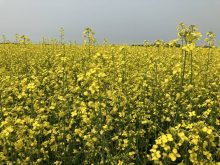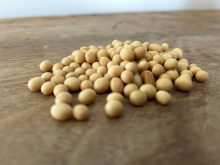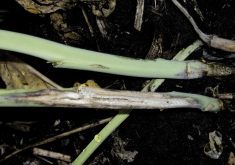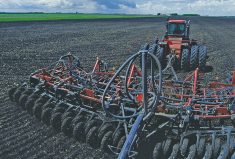Canola could top out at over 24 million acres in Canada this year — one million more acres than growers planted in 2017.
“With the relative return right now, canola is looking better than wheat,” said Murray Hartman, oilseed specialist for Alberta Agriculture and Forestry.
“If these kinds of price signals continue or strengthen in the spring, a million more acres is entirely feasible.”
Agriculture Canada’s preliminary estimates, released at the end of January, show both wheat and canola plantings rising by about one million acres each, with a corresponding drop in pea and lentil acres as a result of India’s tariffs on pulse crops.
Read Also

Canola’s clubroot success story
At one time, scientists, agronomists and growers were extremely worried clubroot would spread across the Prairies and devastate Canada’s canola industry.
If the pulse tariffs remain in place — and there’s reason to believe they will — a big jump in canola and wheat acres is a safe bet.
“This estimate is based on the India pulse tariff staying in place,” said Hartman. “All of a sudden, there goes your price advantage there, so they need to replace their pulses with something else.”
But it’s too soon to say for sure, he added.
“You can’t accurately predict what this fall’s harvest prices are going to be,” said Hartman. “It’s like predicting the weather.”
But price is only one part of the “revenue equation.” Producers also need to think about how much they can grow while still remaining profitable. Alberta Agriculture’s CropChoice$ software — which allows producers to estimate their cost of production, yield, and prices — can help producers make that choice, said Hartman.
“This isn’t an exact science where you can figure it out down to the exact penny per acre,” he said. “(However) this is one tool that helps them pencil out which ones are a little more profitable.”
Shortened rotations
Luckily, producers don’t need to make their seeding decisions today.
“Growers have gone from having a set rotation to having a more flexible rotation, depending on what they figure will have higher profitability,” said Hartman.
And if canola fits that bill and acres rise, expect to see shortened rotations — despite the risks.
“You don’t want to be planting canola back to back for a lot of years, but with more canola acres, there are going to be more shortened rotations.”
The level of risk will vary from farm to farm, but if the rewards pencil out, producers might be willing to take a chance on a shortened rotation.
“Farms tend to be more business oriented, so they’re really looking at short-term, five-year profit windows,” said Hartman.
“If they’re more business oriented, they’re going to be more comfortable with short-term rotations and accepting of the risks.”
It’s hard to estimate what sort of disease levels could result from short rotations on an individual farm, and even harder to put a dollar value on those losses. But the rise of clubroot and blackleg across the Prairies heightens the risk of disease pressure overcoming resistant varieties and that, in turn, will affect the long-term viability of canola as a cropping option, he said.
“While one-in-two-year canola can seem just as profitable as a longer rotation, it’s a complicated scenario,” said Hartman. “But from the perspective of agronomics, it’s starting to pose more problems and create more issues.”
Growers will need to make these tough decisions as they head into the growing season, said Curtis Rempel, vice-president of crop production and innovation for the Canola Council of Canada.
“Everybody is looking at balancing rotation needs and profit opportunities.”
Best management practices
But regardless of whether a producer plans to increase, maintain, or cut back canola acres, he or she needs to focus on proper production practices to keep canola profitable.

“We know growers are going to be growing some canola, so we really want to stress best management,” said Rempel.
The first step is determining your target plant density — usually six to eight plants per square foot, depending on things such as early-season frost risk, stand uniformity, weed control measures, insect damage, and the length of the growing season. The Canola Council of Canada’s Canola Calculator can help with that.
“We have tools that are there to make canola producers successful for the coming season.”
Producers also need to consider the varieties they grow. If they’re in an area where clubroot or blackleg is a problem, they’ll need to grow resistant varieties. And then it comes down to scouting, said Rempel.
“Work with your agronomist to make sure you’re scouting your fields ahead of time and after you’ve planted so nothing gets away on you,” he said.
That may also help producers decide if shortening their rotations to make a short-term profit is worth the risk, Hartman added.
“If they’ve been doing a good job of scouting, they have a little more confidence knowing whether they can shorten their rotation there,” he said.
“But for people who don’t scout, a short rotation is like crossing the highway blindfolded.”















